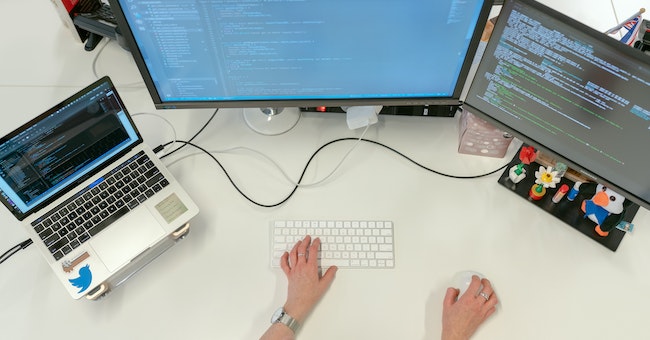Revolutionizing Industries: Exploring the Power of Digital Manufacturing

Introduction
In an era of rapid technological advancements, digital manufacturing has emerged as a transformative force that is reshaping industries, processes, and supply chains. This cutting-edge approach leverages the integration of digital technologies to optimize production, streamline operations, and create innovative products. From enhanced customization to reduced waste, digital manufacturing is revolutionizing the way we conceptualize, design, and produce goods. In this blog, we delve into the world of digital manufacturing, exploring its key concepts, benefits, challenges, and its potential to reshape industries across the globe.
Understanding Digital Manufacturing
Digital manufacturing, often referred to as Industry 4.0 or the Fourth Industrial Revolution, encompasses the integration of various digital technologies throughout the entire product lifecycle, from design and engineering to production and distribution. This approach combines tools like computer-aided design (CAD), computer-aided engineering (CAE), computer-aided manufacturing (CAM), simulation, data analytics, and the Internet of Things (IoT) to create a seamless and interconnected manufacturing ecosystem.
Key Concepts and Technologies
Additive Manufacturing (3D Printing): One of the cornerstones of digital manufacturing is additive manufacturing, more commonly known as 3D printing. This technology enables the creation of complex and intricate structures layer by layer, allowing for rapid prototyping, customization, and reduced material waste.
Simulation and Digital Twins: Simulation tools allow manufacturers to create virtual prototypes and simulate real-world scenarios before production begins. Digital twins, virtual replicas of physical assets or processes, enable real-time monitoring, analysis, and optimization of production lines, enhancing efficiency and reducing downtime.
IoT and Connectivity: The Internet of Things (IoT) plays a pivotal role in digital manufacturing by connecting devices, machines, and systems. This connectivity facilitates data collection, analysis, and communication, enabling smart decision-making and predictive maintenance.
Data Analytics: Data-driven insights derived from production processes and supply chain activities help manufacturers optimize efficiency, quality, and resource allocation. Advanced analytics also enable predictive maintenance and the identification of potential bottlenecks.
Robotics and Automation: Collaborative robots (cobots) and robotic automation enhance production by performing repetitive tasks with precision and speed. Human-robot collaboration creates flexible and agile manufacturing environments.
Benefits of Digital Manufacturing
Enhanced Customization: Digital manufacturing allows for greater customization and personalization of products, meeting the diverse demands of consumers while minimizing production lead times.
Reduced Time-to-Market: Rapid prototyping and streamlined production processes enable faster product development cycles, giving companies a competitive edge in bringing products to market.
Waste Reduction: Additive manufacturing reduces material waste, and optimized production processes minimize energy consumption and resource usage.
Cost Efficiency: Automation and smart manufacturing techniques optimize resource allocation, reduce labor costs, and enhance overall operational efficiency.
Improved Quality: Digital manufacturing offers real-time monitoring and quality control, minimizing defects and ensuring consistent product quality.
Supply Chain Optimization: The integration of digital technologies allows for real-time visibility into supply chain activities, leading to better demand forecasting, inventory management, and timely delivery.
Challenges and Considerations
Initial Investment: Adopting digital manufacturing technologies often requires significant upfront investments in equipment, software, and employee training.
Workforce Transition: The shift towards automation and digital technologies necessitates a skilled workforce capable of operating and maintaining these systems.
Data Security and Privacy: As more data is generated and shared, ensuring data security and protecting intellectual property become critical concerns.
Integration Complexity: Integrating various digital tools and technologies into existing workflows can be complex and may require substantial changes to existing processes.
Applications across Industries
Automotive: Digital manufacturing enables car manufacturers to create lightweight, energy-efficient vehicles with enhanced safety features and personalized interiors.
Aerospace: Aerospace companies utilize digital manufacturing for designing intricate components, reducing weight, and improving fuel efficiency.
Healthcare: In the medical field, 3D printing has revolutionized the production of prosthetics, implants, and medical devices, offering tailored solutions for patients.
Consumer Electronics: Digital manufacturing facilitates the production of high-tech consumer electronics, from smartphones to wearable devices.
Fashion and Apparel: The fashion industry employs digital manufacturing for custom-designed clothing, reducing waste in the production process.
Recommended Online Resources for Digital Manufacturing
Digital Manufacturing & Design Technology
The Digital Manufacturing and Design Technology specialization offers an in-depth exploration of the latest advancements in digital manufacturing and design. Comprising nine courses, learners will delve into Industry 4.0's key components, including digital manufacturing practices, the digital thread, the Internet of Things (IoT), and Big Data. This specialization caters to high school graduates pursuing manufacturing careers and operations managers aiming to stay current with emerging technologies.
Course highlights:
Comprehensive Overview: Explore the latest advancements in digital manufacturing and design.
Industry 4.0 Insights: Understand Industry 4.0 components like digital practices, IoT, and Big Data.
Applicable Knowledge: Ideal for high school graduates and operations managers in manufacturing.
Revolutionizing Field: Rapidly growing field revolutionizing factory processes and goods production.
Cutting-Edge Technologies: Learn AI, ML, VR, AR, and IoT for enhanced efficiency.
Digital Manufacturing & Design
Gain insight into manufacturing's digital transformation, its technologies, and impact. Understand its role in increasing competitiveness and productivity. Ideal for those intrigued by this industry shift, considering advanced manufacturing careers, seeking further education, or self-establishing DMD-related professional goals.
Course highlights:
Understand manufacturing's digital transformation and its impact on industries.
Learn about technologies driving this shift and their implications.
Explore effects on careers, practices, and competitiveness in various companies.
Ideal for those curious about industry changes and considering advanced manufacturing.
Provides a foundation for further education and self-established professional goals.
What is Digital Manufacturing?
Discover the world of Digital Manufacturing through an engaging animation designed for non-experts. This informative video breaks down complex concepts like sensors, digital twins, robots, and cloud-based technologies. Ideal for workshops and accessible to all ages, including children, this animation is a product of EU Horizon 2020 research program and EPSRC-funded DigiTOP initiative. Explore the realms of technology transforming manufacturing with ease and excitement.
Course highlights:
Animation Introduction: Engaging non-experts in Digital Manufacturing understanding.
Workshop Versatility: Ideal for diverse audiences, including children.
Simplified Concepts: Explains sensors, digital twins, robots, cloud technologies.
Educational Funding: Supported by EU Horizon 2020 and EPSRC DigiTOP.
Accessible Insight: Unveils Digital Manufacturing's impact on modern technology.
FAQs
Q: What are the Types of Manufacturing?A: Manufacturing can be categorized into several types, including additive manufacturing (3D printing), subtractive manufacturing (machining), assembly, fabrication, and continuous process manufacturing.
Q: What is Just-In-Time (JIT) Manufacturing?A: JIT manufacturing is a strategy that aims to produce goods only when they are needed, reducing inventory costs and waste. It requires precise coordination between production, supply chain, and demand.
Q: What is Computer-Aided Design (CAD)?A: CAD is the use of computer software to create detailed and precise designs of products, components, or structures, which aids in visualization, modification, and testing before actual manufacturing.
Q: What is Computer-Aided Manufacturing (CAM)?A: CAM involves using computer software to control manufacturing processes, including machining, welding, and assembly. It helps automate and optimize production processes.
Q: What is Six Sigma in Manufacturing?A: Six Sigma is a quality management methodology that focuses on minimizing defects and variations in manufacturing processes to achieve near-perfect quality standards.
Q: How Does Automation Impact Manufacturing?A: Automation involves using machinery, robots, and control systems to perform tasks without human intervention. It enhances efficiency, reduces errors, and increases production rates.
Conclusion
Digital manufacturing has ushered in a new era of efficiency, innovation, and sustainability across industries. By leveraging a powerful blend of technologies, companies can create products that are highly customized, cost-effective, and environmentally responsible. As the adoption of digital manufacturing continues to grow, businesses are poised to stay competitive in a rapidly evolving global market. The journey towards Industry 4.0 promises exciting advancements, revolutionizing the way we design, produce, and experience products in an increasingly interconnected world.





